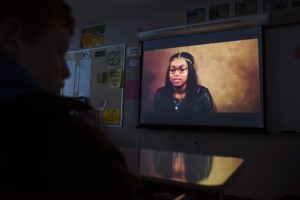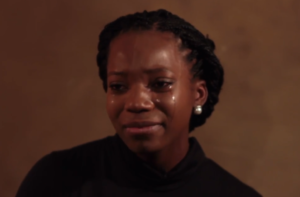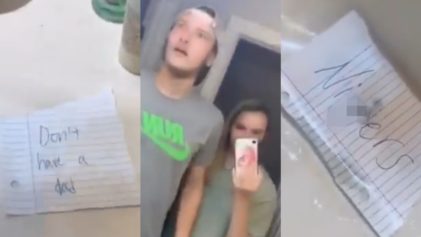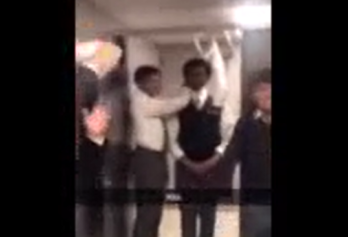Black high school students at one of Maryland’s top performing high schools opened up about the harsh realities of racism in a candid YouTube Video inspired by the “I,Too, Am Harvard” project.
Some students voiced their confusion through tears while others gave passionate monologues that exemplified their frustrations. But all of the students in the “I, Too, Am B-CC” video were dealing with emotional battles against the effects of racism and stereotypes.
These emotional reactions are captured in the video campaign that has since gone viral, featuring students at Bethesda-Chevy Chase High School opening up about the subtle jabs that they must endure from the whites around them despite being enrolled in a school that is generally perceived as racially accepting and diverse.
Through hard work, dedication and an appreciation for learning, these students have managed to excel in the classroom and beyond, but they were never able to pull themselves away from racism’s painful grasp.
The idea for the project came from a student by the name of Makdes Hailu. In the beginning of the video, she opens up about how hard she worked and studied to earn a spot on the school’s academic team.
Her hard work paid off, but some of her white peers felt Makdes only earned a spot on the team because of her race.
“At that moment, I just remember feeling so hurt,” Makdes said in the video. “For the rest of the year and throughout the team, I just felt like everyone was looking at me like, oh, I was that Black girl who made the team because she was Black and not because of merit.”
Unfortunately, Makdes’ experience isn’t unique.
The video captures stories from many Black and Hispanic students who explained how their hard work may have earned them high grades and academic achievement, but it never earned them freedom from racially charged comments that often worked to discourage them.
One of the students recalls the pain he felt after hearing a white student tell another Black student that he didn’t “look like someone who plays the violin.”
In actuality, the young Black boy was going to play the violin at the school’s winter concert.
“I felt it was degrading, like someone like me couldn’t look like they play the violin,” 17-year-old Allistare Sasser said.
Throughout the video, many of the bright students struggle to even look at the camera. Some have shaky voices while others erupt in tears.
At such a young age, the burdens of racism have been precariously perched on their shoulders and have weighed down on their spirits for years.
For B-CC senior Sisan Dorsu, it has done more than just discourage her, it has left her feeling confused about who she is.
“Growing up I felt like I have had to look like the white man, dress like the white man, talk like the white man in order to be seen as being on the same level with the other white kids,” Dorsu says as she bursts into tears. “Now, I’m in a situation where I really don’t know, like, what am I?”
Other students recall being told that they don’t “look” like students who receive straight As or have other academic talents.
It’s a reminder that racism’s attacks, even in a school as seemingly accepting and warm as this one, can often be quiet and tucked away between the lines of jokes and subconscious assumptions about peers.
For white students at the school, it was an eye-opening video.
“I didn’t realize how deep it really goes,” said a 16-year-old white student named Victoria Barnett who also opened up about how proud she was of her school for sparking such an important discussion.
Hailu Gtsadek, the father of the young girl whose story sparked the video project, was just as proud of all the students who participated.
“It’s a powerful statement,” he told the Washington Post. “This generation, these kids, have found the right way to go about addressing a problem. They put the problem out there, and they are proposing solutions as well.”
Students, parents and faculty alike have been extremely supportive of the project, but YouTube comments have served as a reminder of why these conversations are so important.
Some comments accuse the children in the video of being dramatic and exaggerating their experiences at the school.
It’s a comment that many of the B-CC students would disagree with.
One of the white students in the video explained that prejudice is a part of human nature—a “bad” part of human nature that has to be corrected. Even when those responsible for the bias don’t have ill intentions, simple actions can take a major toll on the Black students who are consistently ending up on the receiving end of jokes that question their intelligence, academic capabilities and struggles in a country that falsely boasts a “post racial” title.
Now, Orlando Pinder, the senior who directed and filmed the project, hopes to continue this vital conversation even outside his own school district.
“We’ve heard stories from kids who go to Wootton, from kids who go to Whitman, from kids who go to Walter Johnson, all neighboring schools, and they’re interested in making this a movement,” he said, according to the Washington Post.
It’s an idea that he hopes will manifest itself soon.




